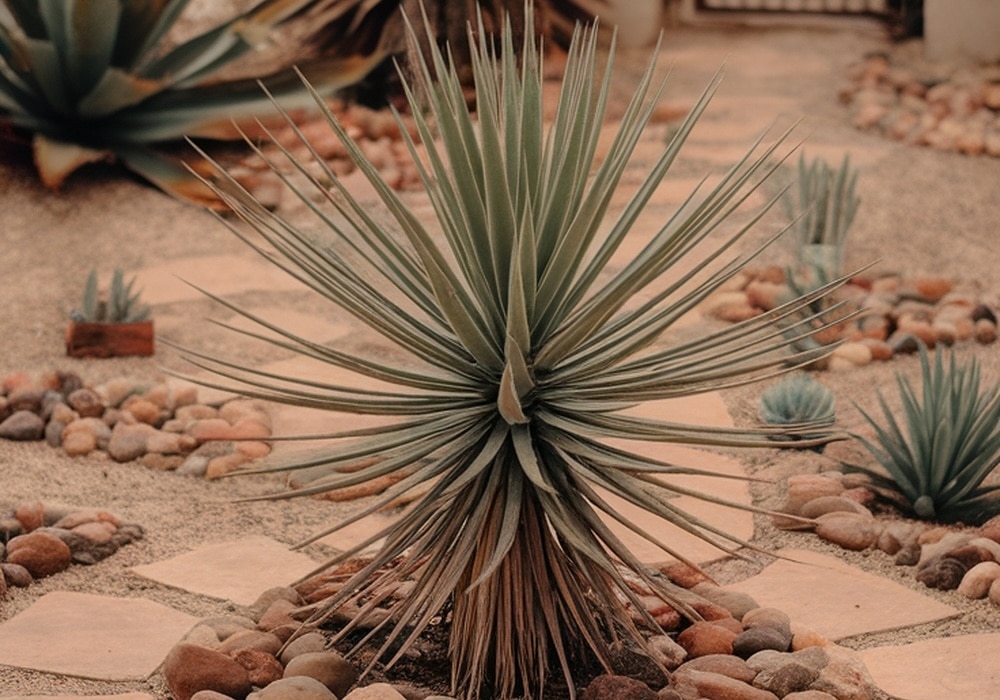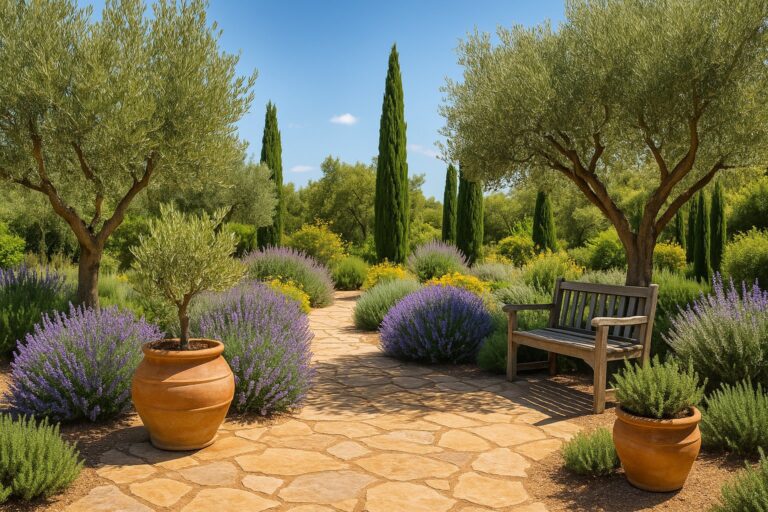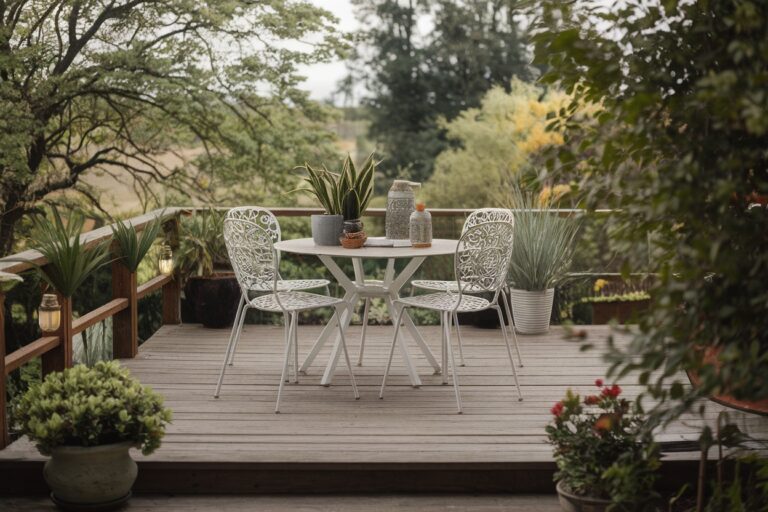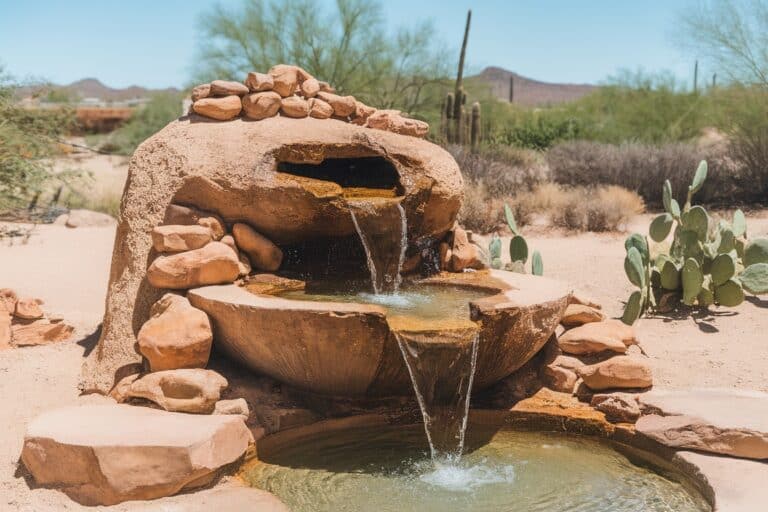11 Genius Ways to Landscape with Adam’s Needle in Your Dry Garden
Looking to spruce up your dry garden? Adam’s Needle, also known as Yucca filamentosa, can be a fantastic addition. With its striking architectural form and low water requirements, it’s perfect for those arid spaces. This guide will share creative ways to incorporate this tough plant into your landscape, ensuring your garden thrives without constant care.
Pairing Adam’s Needle with Colorful Succulents

When landscaping your dry garden, Adam’s Needle (Yucca filamentosa) stands tall and proud. Its spiky blue-green leaves create a striking centerpiece that draws the eye. Surrounding this unique plant with colorful succulents adds life and vibrancy to your garden space.
Consider using a mix of different succulents that vary in shades and shapes. Bright reds and oranges from succulents like Echeveria can create a warm contrast against the cool tones of Adam’s Needle. Grouping these plants together offers a beautiful balance and visual interest.
Don’t forget about texture! Pairing the smooth, fleshy leaves of succulents with the sharp, spiky foliage of Adam’s Needle adds depth to your garden design. This contrast keeps the overall look dynamic and engaging.
For a truly stunning effect, think about the placement. Planting Adam’s Needle slightly off-center, surrounded by a cluster of colorful succulents, can create a natural flow. This arrangement will make your dry garden feel inviting and full of character.
Utilizing Adam’s Needle for Natural Privacy Screens
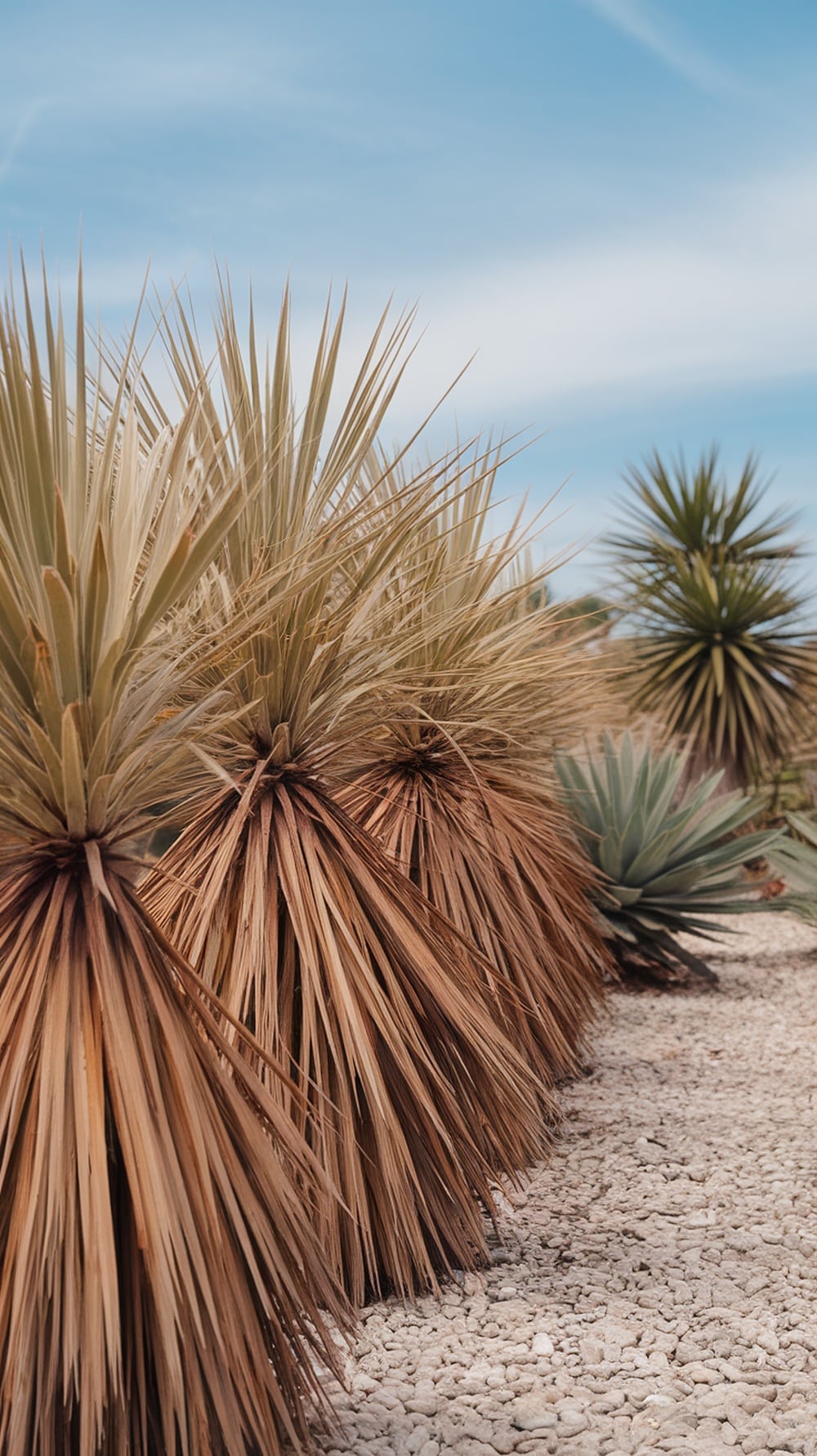
Adam’s Needle, or Yucca filamentosa, offers a unique way to create privacy in your dry garden. The tall, spiky leaves of this plant create a natural barrier that can shield your outdoor space from prying eyes.
In the image, you can see clusters of Adam’s Needle, showcasing their striking form. Their architectural presence adds interest while serving a functional purpose. Planting them in rows or clusters along property lines is a smart move for anyone looking for a low-maintenance privacy solution.
Additionally, these plants thrive in poor soil and require minimal water, making them perfect for dry climates. The contrasting colors of the leaves, from rich greens to golden browns, can enhance your landscape while providing that much-needed seclusion.
For a seamless look, consider mixing them with other drought-tolerant plants. This can create a beautiful tapestry that’s both private and visually appealing, allowing you to enjoy your garden space in peace.
Using Adam’s Needle for Vertical Interest
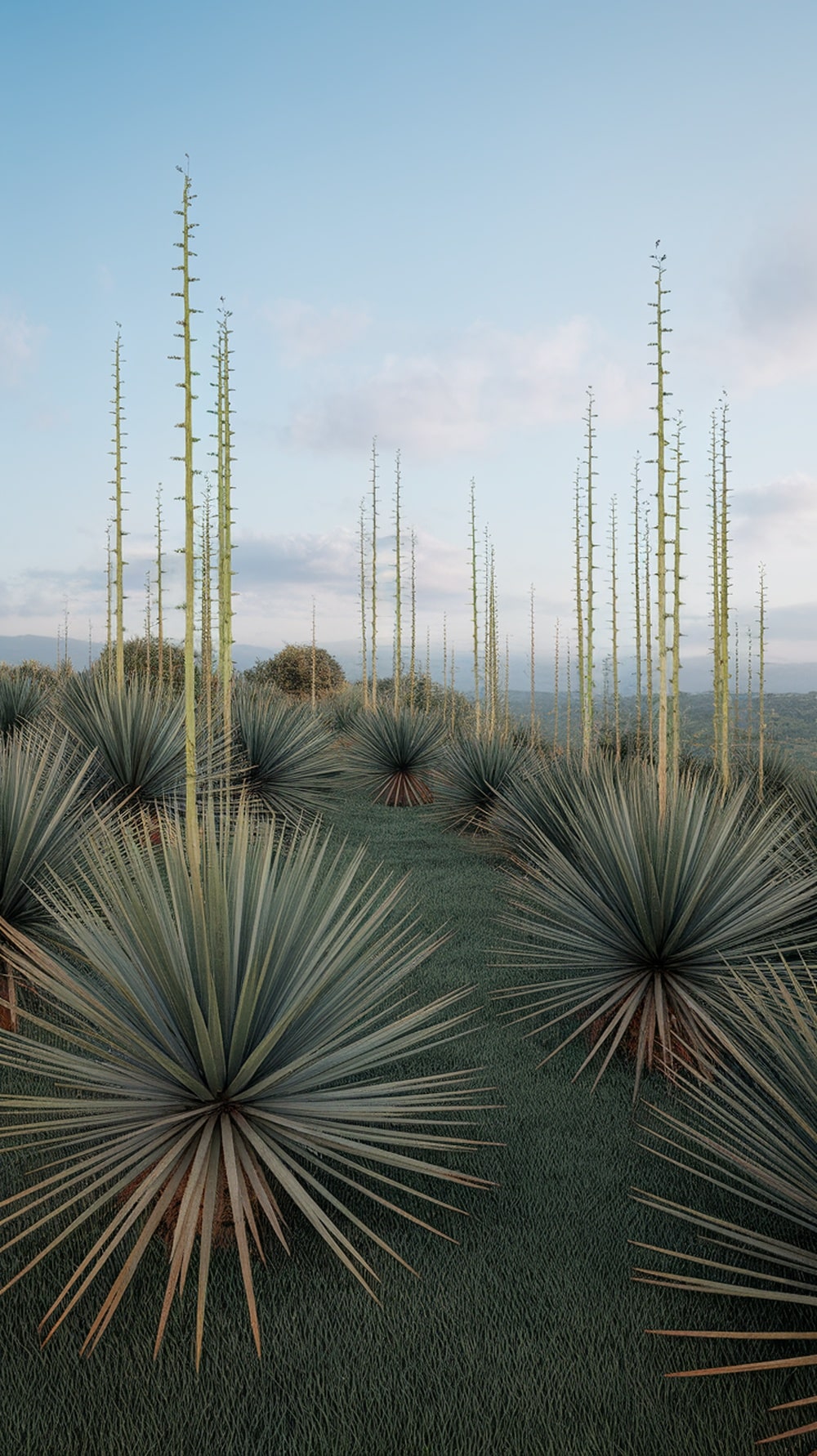
Adam’s Needle, or Yucca filamentosa, is a fantastic choice for adding height to your dry garden. These striking plants feature tall, upright flower spikes that can reach impressive heights, creating a gorgeous vertical element in your landscape. The combination of the spiky leaves at the base and the towering blooms adds a dynamic look that captures attention.
In the image, you can see clusters of Adam’s Needle plants, each showcasing their unique shape and form. The tall flowering stalks stand proud against the backdrop of the sky, making them a standout feature in any garden setting. This vertical interest draws the eye upward, breaking up the horizontal lines often found in traditional gardening.
These plants thrive in dry conditions, making them perfect for xeriscaping. With their low water needs, they’re great for eco-friendly gardens. Pair Adam’s Needle with other drought-resistant plants to create a stunning landscape that is both beautiful and sustainable.
Creating Texture with Adam’s Needle and Gravel

Adam’s Needle, also known as Yucca filamentosa, adds a striking touch to dry gardens. Its long, slender leaves create a beautiful vertical texture that contrasts nicely with the surrounding gravel. The grayish-green hue of the leaves stands out against the warm tones of the gravel, bringing an interesting visual dynamic to your landscape.
The gravel serves not only as a practical ground cover but also enhances the overall texture. By choosing a mix of different sizes and colors of gravel, you can create depth. The pebbles around the Adam’s Needle highlight its unique shape and form, making the plant a focal point in your garden.
When planting Adam’s Needle, consider grouping them in clusters. This grouping can create a natural look while allowing for easy maintenance. The combination of gravel and these hardy plants can withstand harsh conditions, making this setup ideal for low-water gardens.
Adding ornamental rocks and finer gravels can create even more texture. You can layer them around the base of the plants for added interest. This layered effect not only looks great but also helps with drainage, keeping your garden healthy.
Creating a Desert Oasis with Adam’s Needle
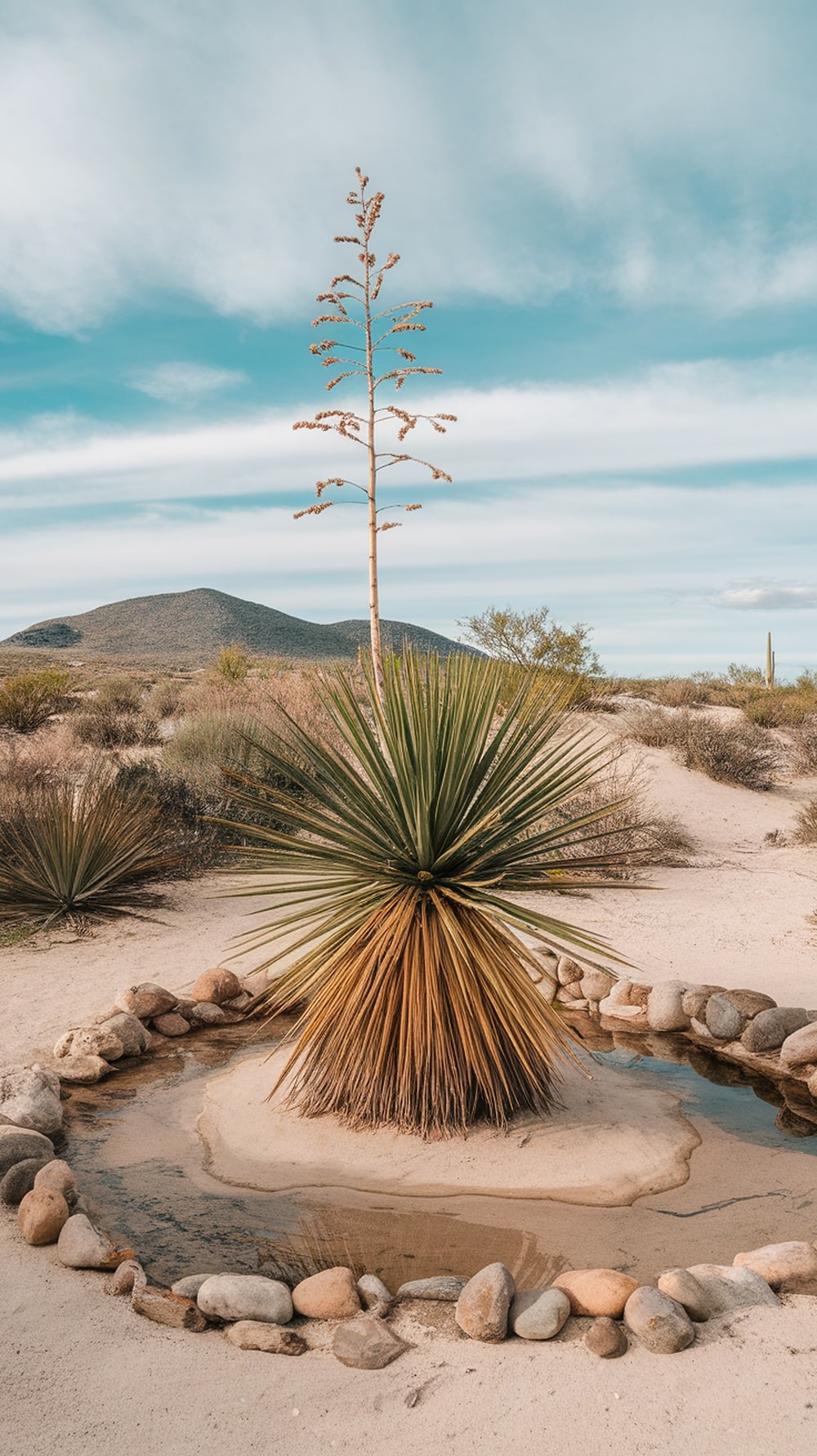
When you think of a dry garden, Adam’s Needle is a standout choice. This striking plant brings a unique charm to your landscape. Its tall, slender flower spikes rise majestically above a rosette of long, spiky leaves, creating an eye-catching focal point.
The image shows a beautiful example of Adam’s Needle, surrounded by stones that outline a small water feature. This design not only adds visual interest but also helps retain moisture in the garden. The contrast between the vibrant green of the leaves and the soft blues of the sky gives a refreshing feel to the dry landscape.
Incorporating Adam’s Needle into your garden can help create a serene and inviting space. Pair it with other drought-resistant plants for a cohesive look. Don’t forget to consider the layout; placing it near a pathway or seating area can enhance your garden experience. With a little creativity, you can turn your dry garden into a stunning desert oasis.
Enhancing Pathways with Adam’s Needle Borders

Creating visually appealing pathways can transform your outdoor space. Using Adam’s Needle as a border is a smart choice for dry gardens. These plants create a striking outline that guides the eye along the path.
The image shows a winding pathway framed with lush Adam’s Needle plants. Their sharp, sword-like leaves stand out, offering both texture and contrast to the gravel path. This combination enhances the overall look while keeping maintenance low.
Adding stones around the plants is a clever idea. The varied colors and shapes of the rocks complement the greenery, adding depth and interest. This arrangement not only looks good but also defines the space, making it clear where the path leads.
For those looking to spruce up their dry garden, consider Adam’s Needle as a simple, effective option. It’s a practical way to boost beauty without extra fuss.
Combining Adam’s Needle with Drought-Tolerant Plants
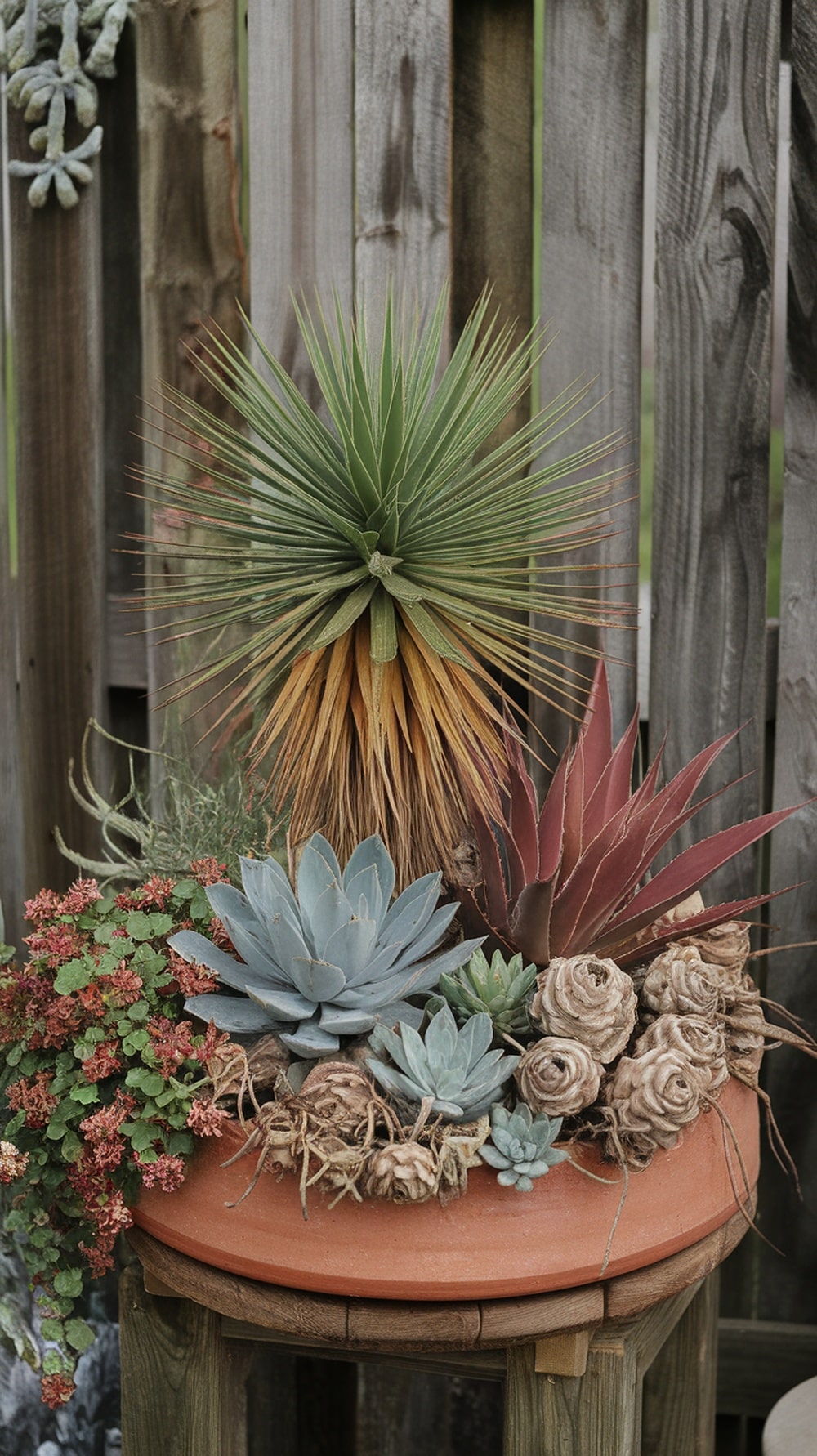
In your dry garden, Adam’s Needle (Yucca filamentosa) serves as a stunning focal point. Its spiky, sword-like leaves rise elegantly, creating a dramatic visual effect. Pairing it with other drought-tolerant plants enhances both color and texture in your landscape.
Consider adding succulents like Echeveria or Agave. Their rosette shapes and varied colors complement the upright form of Adam’s Needle. The blues and greens against the yucca’s sharp lines bring harmony to the garden.
Don’t forget to include vibrant ground covers like Sedum or colorful flowering plants such as Gazania. These add layers of interest and help maintain moisture in the soil, supporting all your drought-tolerant choices.
This combination not only looks appealing but also supports a sustainable garden by reducing water usage. With careful selection, your dry garden can thrive with beauty and balance.
Incorporating Adam’s Needle as a Focal Point
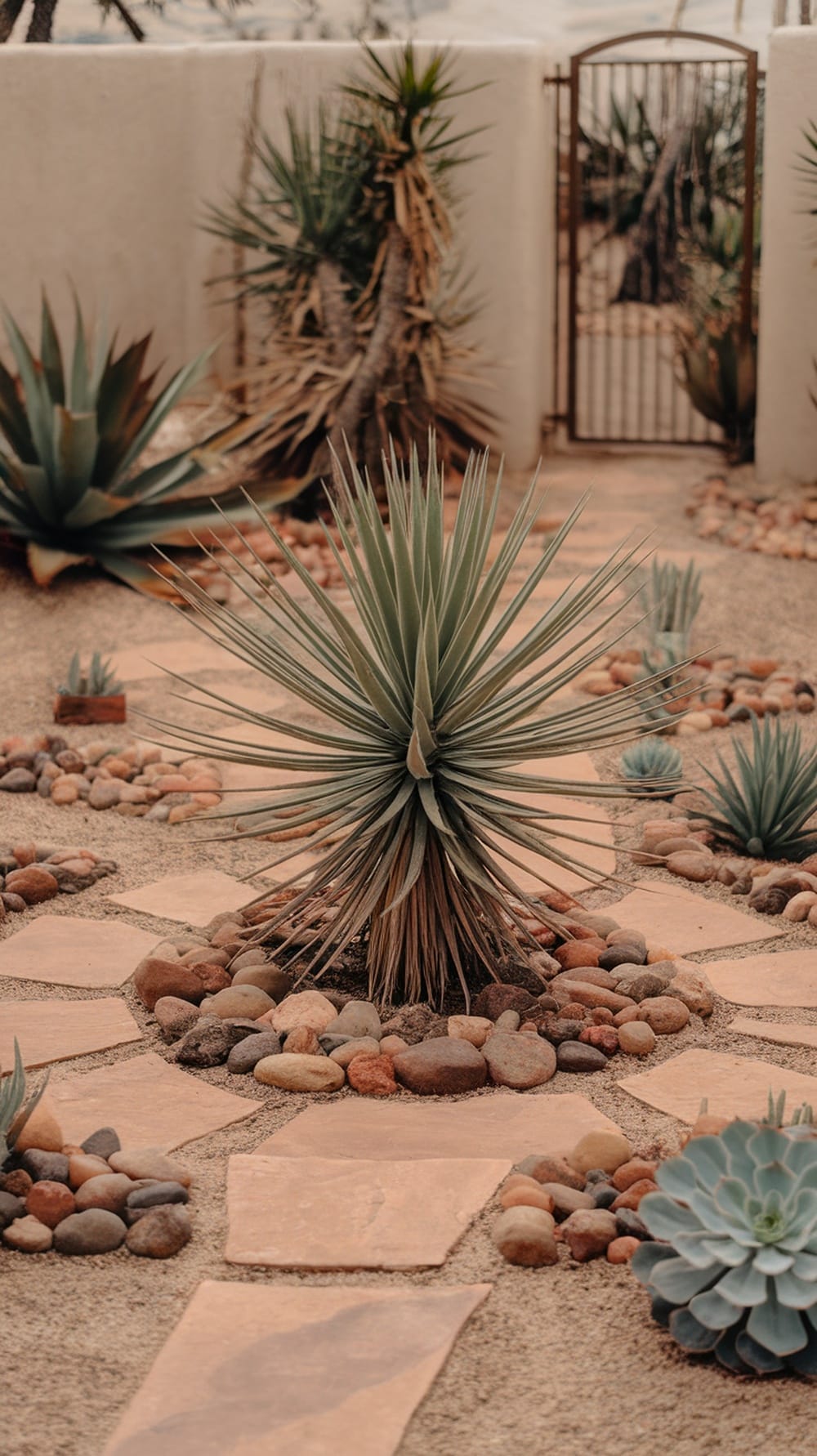
Adam’s Needle, or Yucca filamentosa, is a fantastic choice for a dry garden. Its unique, spiky leaves and tall flower spikes make it a standout feature. Positioning it as a focal point can draw the eye and create a beautiful centerpiece in your landscape.
In the image, you see Adam’s Needle placed prominently among smooth stones and pathways. This not only highlights its striking form but also complements other plants without overwhelming them. The surrounding rocks and sandy ground create a natural feel, enhancing the low-maintenance look that many dry gardens aim for.
To enhance this effect, consider planting Adam’s Needle where it can receive plenty of sunlight. Surround it with contrasting textures like round stones or succulent plants. This combination adds visual interest and makes the plant pop in your outdoor space.
Designing Layered Landscapes with Adam’s Needle

Adam’s Needle, or Yucca filamentosa, is a standout choice for adding depth and character to your dry garden. These striking plants boast long, sharp leaves that create a dramatic visual effect. Planted in clusters, they form a natural focal point, drawing the eye and enhancing the overall design.
The layered approach is key here. Position taller Adam’s Needle plants in the back, while shorter, subtler plants fill in the front. This creates a sense of fullness and dimension. You can mix in some gravel or decorative stones around them to complement their rugged look.
Don’t forget about the hardscape! The stone steps visible in the image add another layer of texture to your garden. They guide the viewer’s eye and break up the planting areas, making the space feel more dynamic. Experiment with different heights and shapes in your landscape to keep it interesting.
Consider adding other drought-resistant plants alongside the Adam’s Needle for variety. Succulents and ornamental grasses work well, providing contrast without overwhelming the scene. The unique shapes and colors will create a vibrant yet harmonious environment, perfect for a dry garden.
Seasonal Variation with Adam’s Needle in Bloom
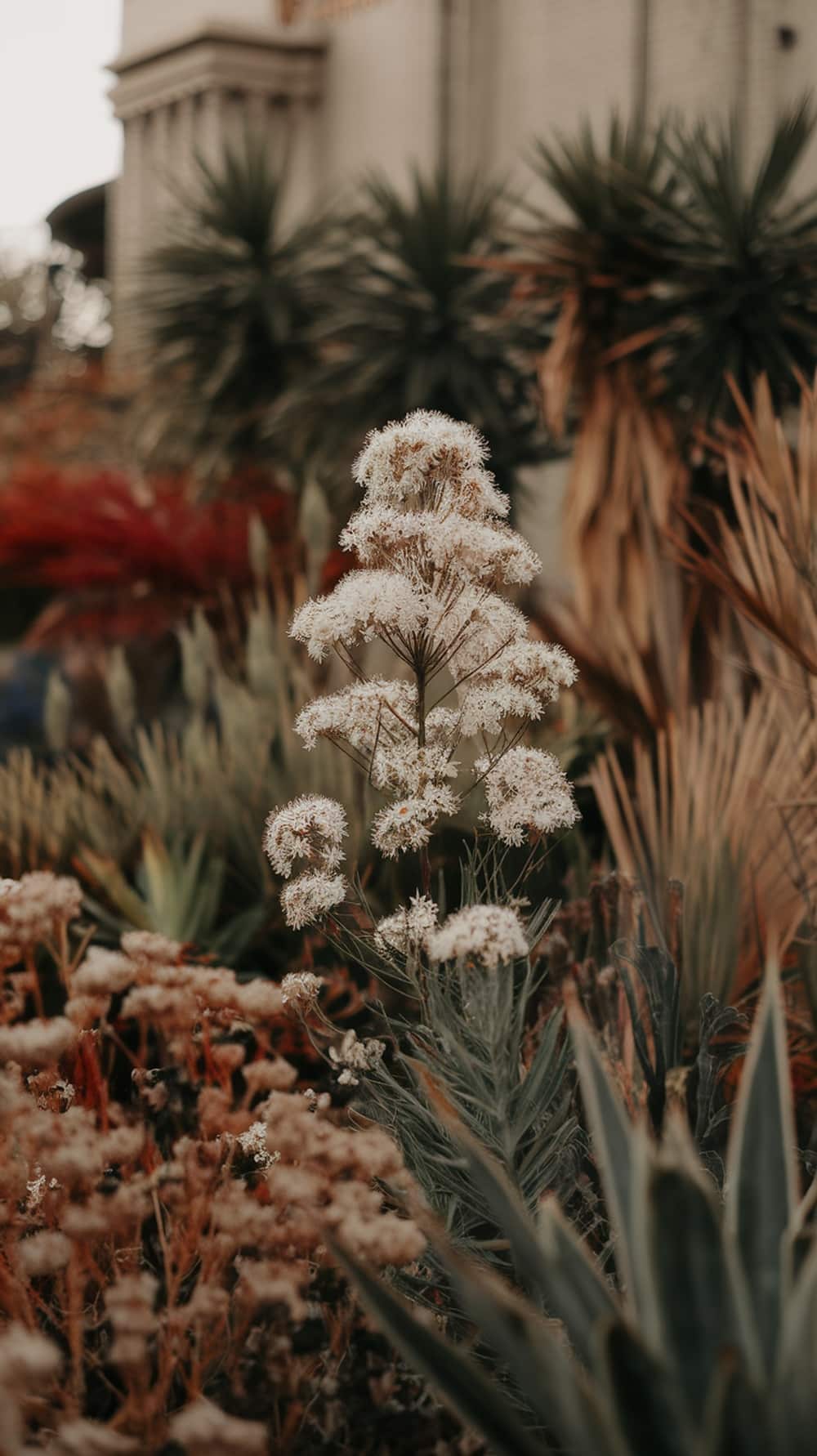
Adam’s Needle, or Yucca filamentosa, is a stunning addition to any dry garden. During blooming season, these plants showcase tall flower spikes adorned with clusters of white blooms. The contrast between the delicate flowers and the sturdy, sword-like leaves creates a striking visual appeal.
In the image, you can see the beautiful blossoms standing tall amidst a backdrop of varied textures and colors. The soft white flowers add a touch of elegance, while the surrounding plants contribute to a rich tapestry of hues, making your garden feel alive and vibrant.
These blooms not only attract pollinators but also bring seasonal change to your garden. As the flowers open, they create a lively atmosphere, drawing the eye and creating a focal point amongst the more muted colors of the other plants. This seasonal variation brings excitement and freshness to your dry garden, making it a delightful space to relax and enjoy nature.
Incorporating Adam’s Needle in Rock Gardens
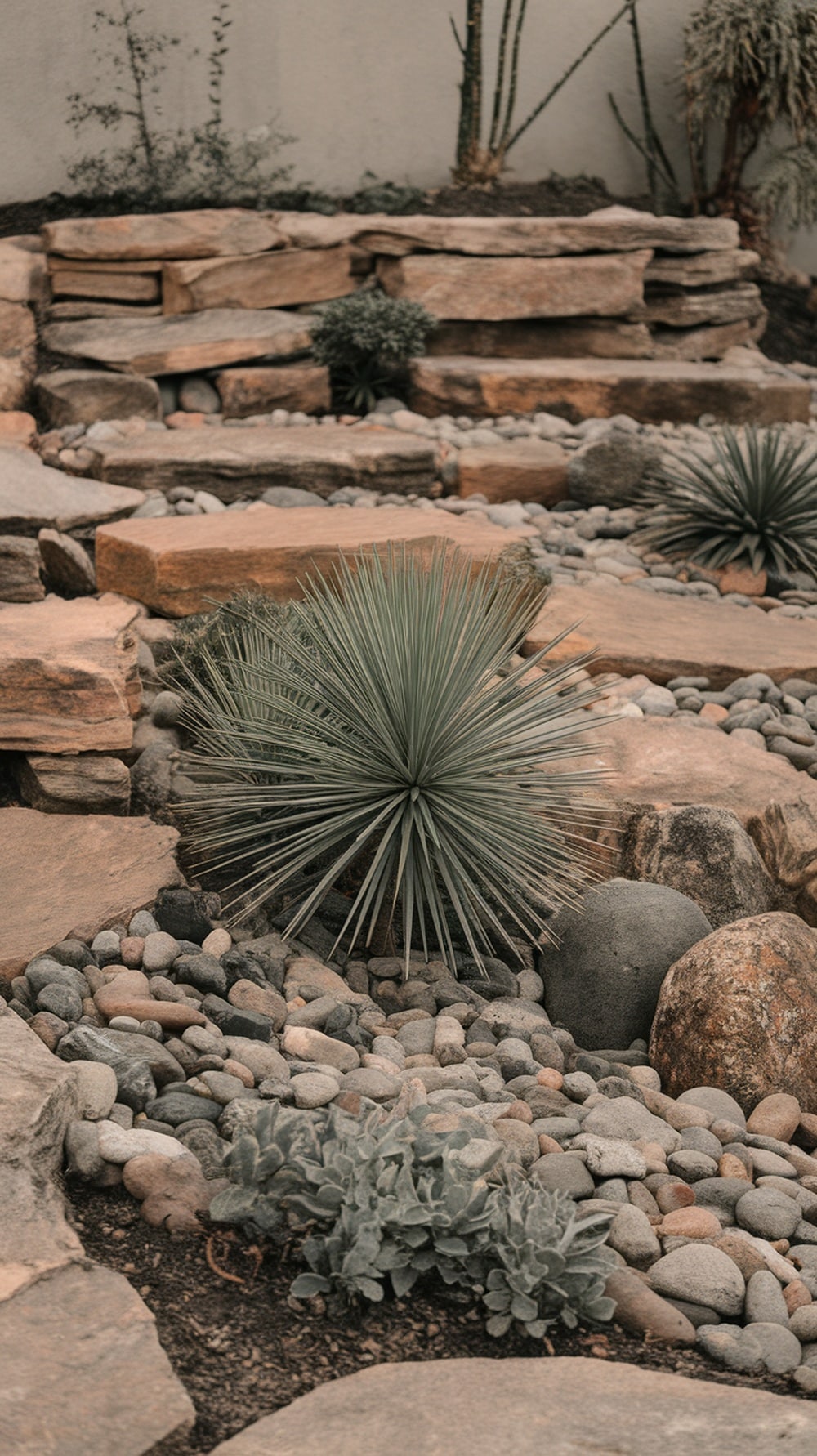
Adam’s Needle, also known as Yucca filamentosa, is a fantastic choice for rock gardens. Its spiky, architectural leaves add a unique texture, making it a standout feature among stones and gravel. The plant’s strong, upright form contrasts beautifully with the softer elements in your garden.
In the image, you can see Adam’s Needle surrounded by various sizes of rocks and pebbles. This layout highlights the plant’s natural beauty while creating a cohesive look with the rocky surroundings. Positioning these plants among larger boulders or flat stones can create visual interest and depth in your garden.
When planning your rock garden, think about the color palette. Adam’s Needle has a striking blue-green hue, which pairs well with earthy tones of the rocks. Mixing in some low-growing succulents or other drought-tolerant plants can enhance this aesthetic while providing a habitat for local wildlife.
Remember to consider sunlight and drainage when placing Adam’s Needle. These plants thrive in well-drained soil and full sun, making them perfect for dry gardens. With the right setup, you can create a stunning rock garden that showcases the beauty of this resilient plant.

